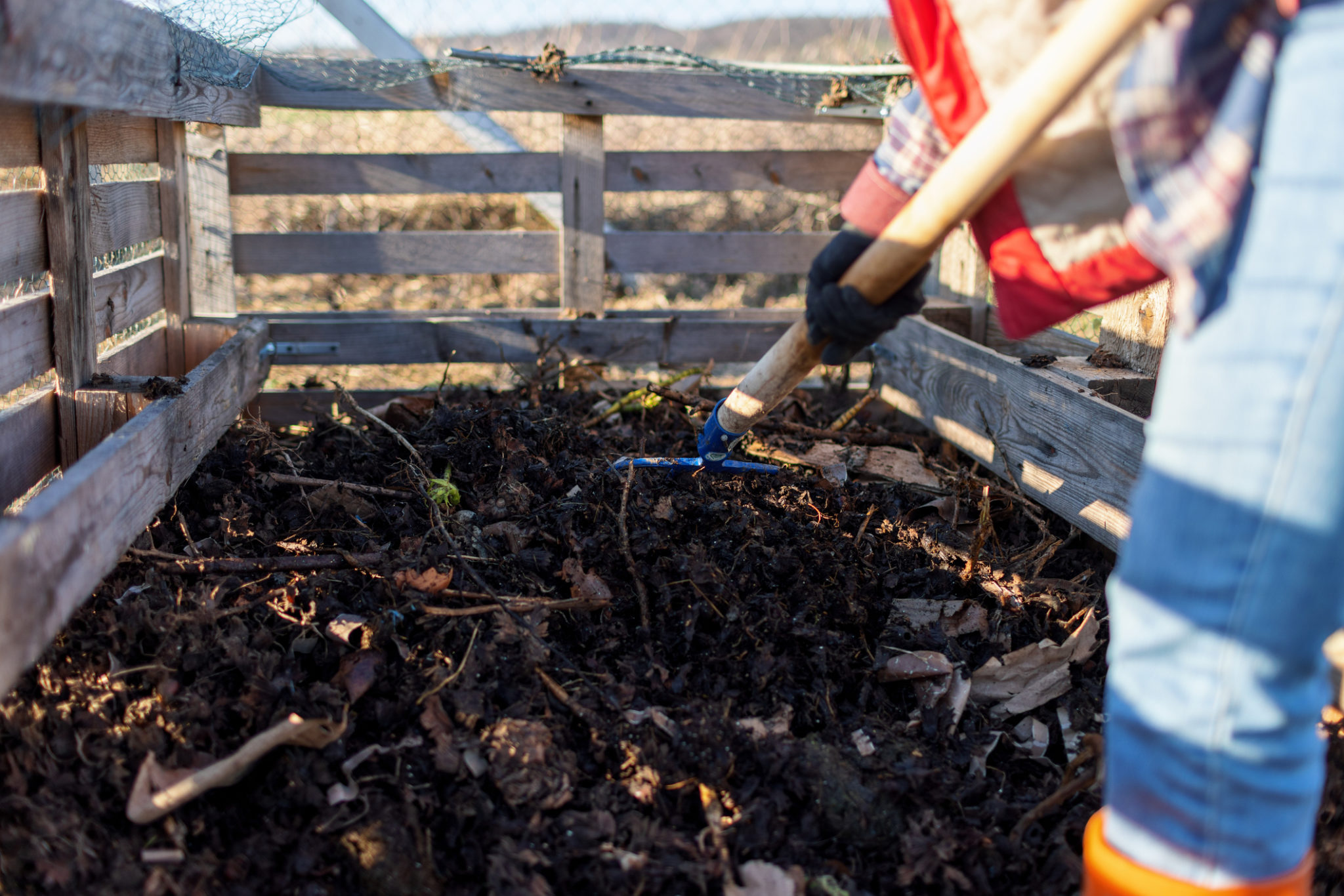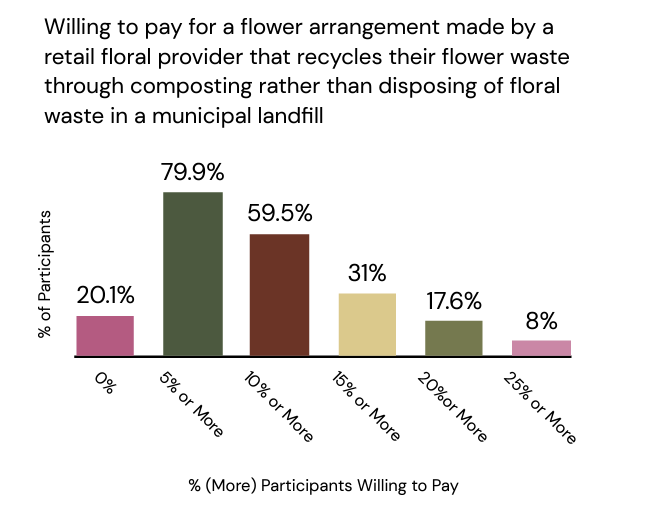Exploring Composting: U.S. Consumer Perceptions & Willingness to Pay for Sustainable Environmental Practices in the Floral Industry
By Cindy Hanauer, Grand Central Floral
 Composting is one of the easiest ways to begin a sustainability program. The practice of composting has been around a considerable amount of time, with evidence of ancient civilizations composting as far back as 4,000 years ago. However, the modern method of composting as an agricultural practice began in the 1920s.
Composting is one of the easiest ways to begin a sustainability program. The practice of composting has been around a considerable amount of time, with evidence of ancient civilizations composting as far back as 4,000 years ago. However, the modern method of composting as an agricultural practice began in the 1920s.
A florist can recycle and compost green waste by separating plant trimmings and organic matter, such as leaves and flowers, from plastic and non-organic waste. Mix the waste with brown materials such as shredded newspaper or sawdust, and add some water to moisten the mixture. These plant materials can be composted using a compost bin or heaping in a pile or row, which will break down the organic matter and turn it into nutrient-rich soil amendment. The finished compost can then be used as a fertilizer for potted plants or returned back to the soil to achieve a robust agricultural crop.
So, what if you don’t have a garden or outdoor growing area? Some florists partner with local composting facilities, floral growers, or agriculture farms to dispose of their green waste sustainably (a list of composting facilities can be found on the US Composting Council’s website.) A business may also arrange for compost pickup by contacting their local waste management or composting company to see if they offer collection services. If not, many cities have community composting programs where residents can drop off their compost.
The Floral Marketing Fund’s recent study, U.S. Consumer Perceptions & Willingness to Pay for Sustainable Environmental Practices in the Floral Industry, explores consumers’ perspectives on sustainable practices, including composting and recycling, among many other sustainable practices.
So, what are your consumers saying is the willingness to pay value of composting floral waste?
And the survey says…
 The majority of participants shared a willingness to pay a premium of 10% or more for flowers to a floral provider that recycles their flower waste through composting rather than disposing of it in a landfill. This was the second most influential sustainable practice where consumers are willing to pull out their wallets behind locally sourcing flowers.
The majority of participants shared a willingness to pay a premium of 10% or more for flowers to a floral provider that recycles their flower waste through composting rather than disposing of it in a landfill. This was the second most influential sustainable practice where consumers are willing to pull out their wallets behind locally sourcing flowers.
Does age impact this response? When asked to “indicate how much more, if any, you would be willing to pay for a flower arrangement made by a retail floral provider that recycles their flower waste through composting rather than disposing of floral waste in a municipal landfill,” it was found that in all age groups, except for those 65 years of age and older, indicated a willingness to pay of 10% or more for flowers to a floral provider that composts their floral waste.
Additionally, some local, county, and state governmental bodies offer incentives for composting, such as tax credits or rebates for purchasing composting equipment or using compost in agriculture. Contact your local government, county extension agency, or waste management company to see if any incentives or programs are available in your area.
Is your business already composting? If so, we’d love to hear about it!
To read the full study, view additional articles on other sustainable practices, and watch webinars, click here. You can share any of your own business experiences with us at info@floralmarketingfund.org.







